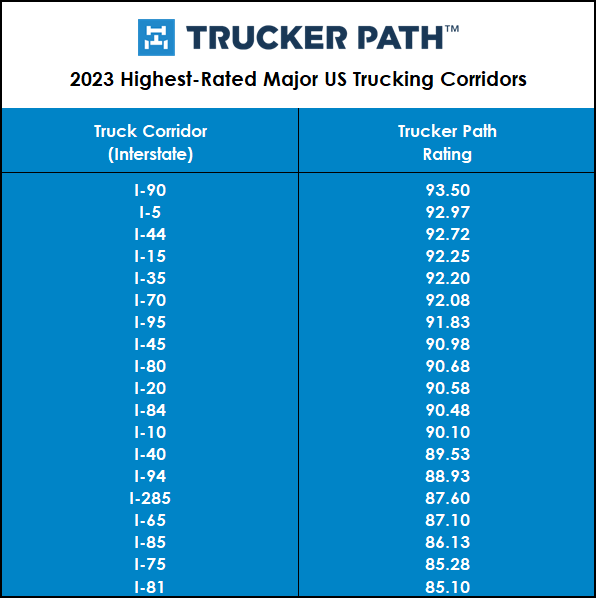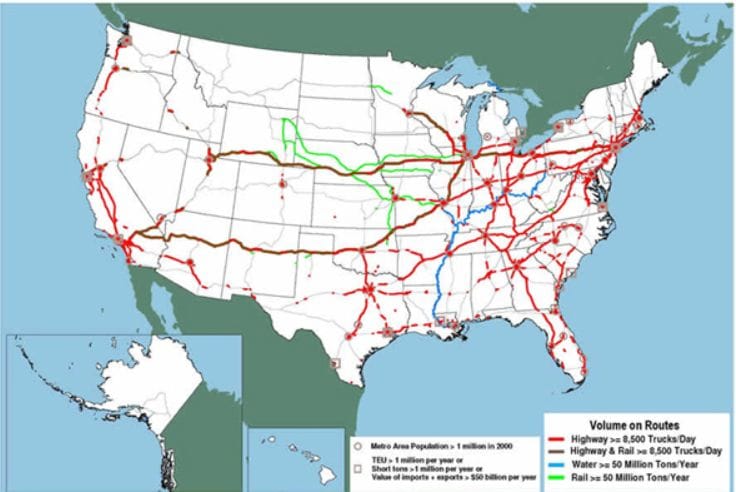C.H. Robinson Pushes Supreme Court to Affirm Broker Liability Shield Under Federal Law
C.H. Robinson urges Supreme Court to affirm federal preemption of state negligent selection claims, reinforcing protections for brokers under the F4A.
Here are the top freight corridors for truckers based on parking, amenities, and fuel costs. I-90, I-5, and I-44 lead the pack in Trucker Path's rankings.

You know how truckers are always grumbling about finding decent parking, pit stops, and affordable fuel? Well, Trucker Path just dropped a bombshell report ranking the most driver-friendly freight corridors nationwide.
Let's cut to the chase: the winners are I-90 (Seattle to Boston), I-5 (West Coast), and I-44 (Texas to St. Louis). These routes scored in the 90s out of 100 based on parking availability, truck stop ratings, and fuel prices.
Here are the top of the list:

Now, let's break down the data. Trucker Path's app collected a mind-boggling 20 million driver inputs last year alone. They weighted parking a solid 45% since finding safe spaces is a massive headache. Even in 2023, 9% of areas had zero daytime parking, and 26% were full at night.
As for truck stop amenities (27.5% weight), drivers want plenty of parking, clean showers, grub, and 24/7 maintenance services. Nothing too fancy, just the basics to keep them trucking.
Finally, fuel prices (27.5% weight) are still a sore spot, with the national diesel average hovering around $3.73 per gallon. But some corridors offer better deals than others.
The rankings aim to help drivers identify friendly lanes for parking, amenities, and fuel costs when planning routes and loads.
High Freight Flow Segments:

The routes rated best for parking, amenities, and fuel costs by Trucker Path significantly overlap with the U.S. DOT's mapping of the most heavily-traveled freight corridors nationwide based on truck/rail volumes.
This overlap makes sense, as the busiest freight routes would likely have more infrastructure and amenities catering to the high truck traffic volumes.
Key Stats:
Kendall Kerzan, DAT Freight & Analytics: Highlights the concentration of freight flows on specific corridors. “The largest freight flows in the US are concentrated on a relatively small number of corridors.”
While the rated highways are considered the best corridors currently, parking shortages and fuel costs remain industry-wide challenges. But these routes offer relatively smoother operating conditions.
Sources: FleetOwner | US Department of Transportation | Kendall Kerzan/LinkedIn
Join over 12K+ subscribers to get the latest freight news and entertainment directly in your inbox for free. Subscribe & be sure to check your inbox to confirm (and your spam folder just in case).